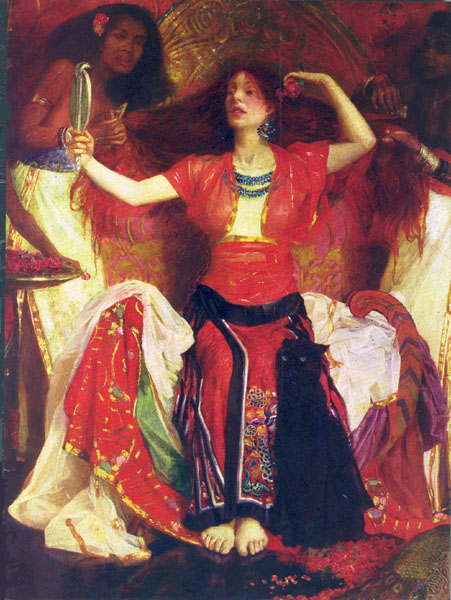Image Details

Russell-Cotes Art Gallery and Museum, Bournemouth, UK/Bridgeman Art Library
Israel’s most accursed queen carefully fixes a pink rose in her red locks, in John Byam Liston Shaw’s “Jezebel,” from 1896. In the foreground, the peacock with its spread tail in the lower right corner represents Jezebel’s vanity; the black cat perched at her feet hints at Jezebel’s darker side.
Jezebel’s long-standing reputation as the most dangerous seductress in the Bible stems from her final appearance on the biblical scene: Jezebel’s husband King Ahab is dead; her son has been murdered by the usurper Jehu; Jezebel is waiting as Jehu’s chariot races toward the palace, where he will kill Jezebel. As the horses approach, “[Jezebel] painted her eyes with kohl and dressed her hair, and she looked out of the window” (2 Kings 9:30).
But is this a sign of vanity or a display of strength when facing certain death? In the accompanying article, Janet Howe Gaines questions the common characterization of Jezebel as the wickedest woman in the Bible.
